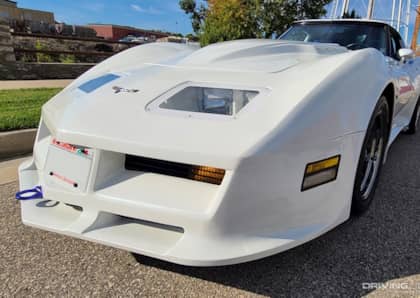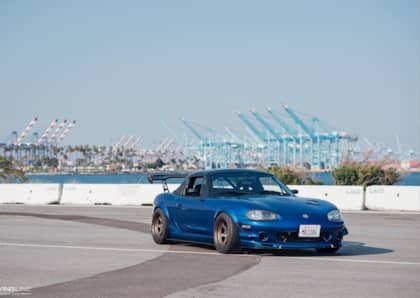How To Protect Carbon Fiber Vehicle Parts
Congratulations, after four weeks of waiting and saving up a sizable chunk of cash you just received your new carbon fiber front lip. You spent a day fitting it up—shaving a little off here and there for a perfect fit to your vehicle. Then after a nice cruise you discover that the leading edge is now full of little stone chips and scuffs. The only way to repair that damage is to have it sanded and re-clear coated.

Most of that frustration can be avoided with some very simple steps prior to installation (or after you have your current scuffs and chips re-cleared). Go to any an IMSA, WEC or Indycar event and look at the leading edges of lips, splitters, fenders and wings, and you'll find a common denominator: There is usually some form of clear urethane film or painted rock guard on those areas. The nice thing is that both the urethane wrap/decal and the rock guard paint is cheap, accessible and relatively easy to install.
Clear Film Defense
For areas that are highly visible and where you don't want to cover up that beautiful carbon weave, a paint protection film like Lamin-X works well. This is because of the film's thickness (12-40 mils) and the impact resistance of the urethane film. This is similar to the headlight film kits and premium clear bra kits and is used to cover the front clip on most race cars. For the film to function in this particular manor, thicker is better. A "universal fit" package would be required because the part this is being put on is not something a manufacturer like Lamin-X or 3M is going to make. Films are fairly easy to put on and most places that do wraps are fully capable of installing them.

Installing the film is a matter of patience. Make sure you start with a clean surface and then prep by rubbing it down with denatured alcohol or wax/grease remover. If the surface is relatively flat or has just a simple curve, peel off the backing a bit at a time and press the film to the surface. Take care to squeegee out any air bubbles as you go. When done trim off any excess film.
If the surface shape is complex, spray the surface with water mixed with a drop of soap. Then work on applying the film. A hair dryer may be needed to make the film stretch over curves. Again, squeegee out the water and air as you go. When done, trim off any excess material.

Once applied to the vehicle, these films can usually be washed and waxed just like the rest of the car, making maintenance pretty basic. It is also replaceable once the film gets too banged-up looking.
Paint as Protection
The other option is to use a spray-on rock guard or bedliner. This is commonly used on areas that are normally hidden from view such as the underside or inner edge of the rear valance, the underside of side skirts or the lip that wraps around into the wheel wells. Dupli-Color's spray-on bedliner is cheap and very effective in this regard.

Prep is pretty basic. Mask around the area you want to paint with fine-line tape and masking tape. Then wet sand/scuff the area to be painted with 300-400 grit paper. Clean the area really well with denatured alcohol or wax/grease remover. If using the Dupli-Color spray-on bedliner, hold the part about 8-10 inches away from the nozzle and lay down medium coats until the area is covered. If necessary, re-coat within the time specified on the packaging.
Bedliner paint dries very hard, so after an hour or two carefully remove the masking while the paint is still soft (not wet). Take care not to get the overspray from the masking onto the carbon part as it will be hard to get off (if you do, a little bit of acetone on a clean rag will take it off but be careful not to damage the clear on the carbon).

Let the part sit overnight and it will be ready to be installed the next day. If, over time, the paint starts wearing away, all that has to be done is re-mask and re-spray.
Both of these options can also be done while the parts are on the vehicle too, it just may take more care in the prep work and masking (if painting). Either way it is easy protection for your carbon parts.











